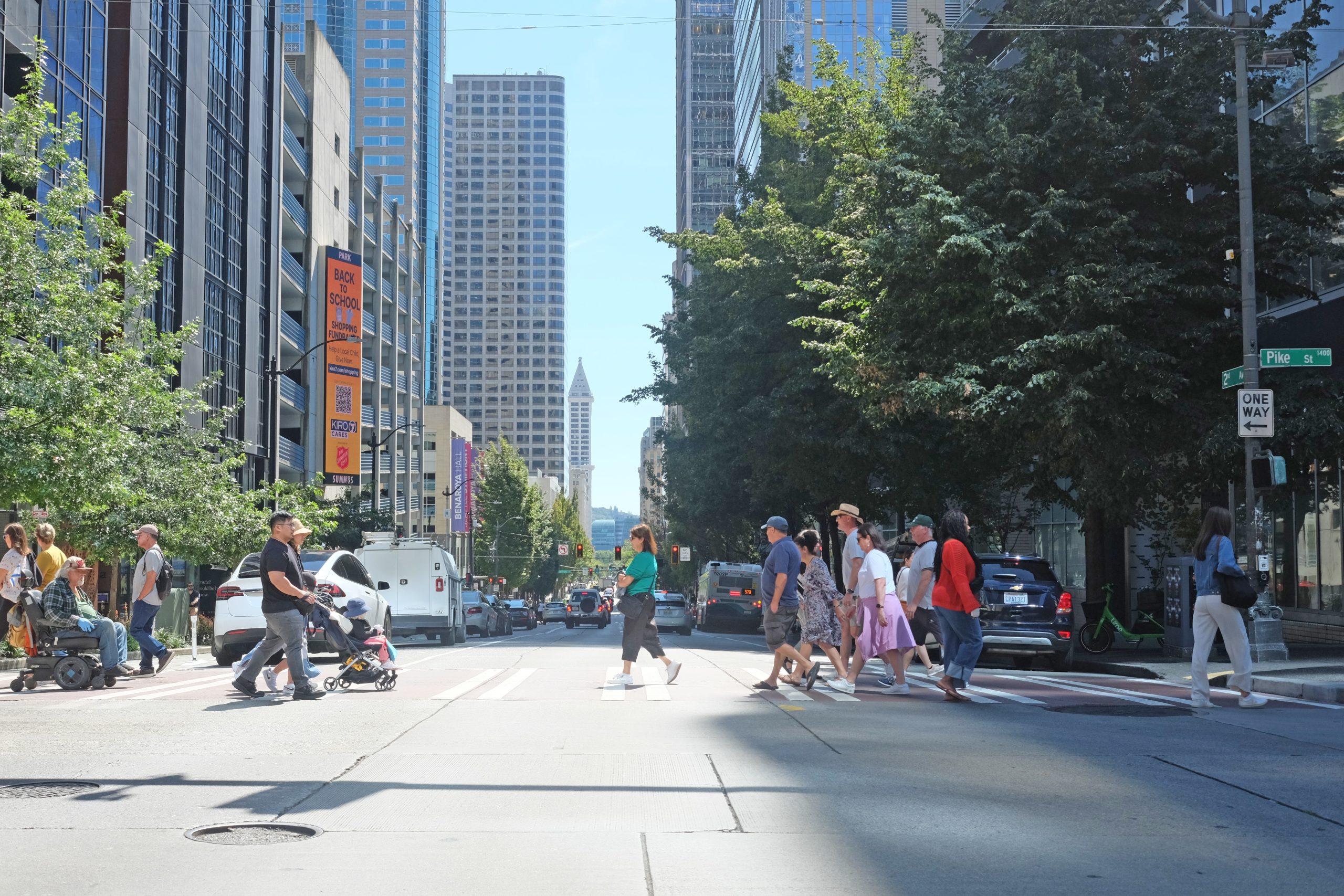News
The Registry: Seattle’s downtown recovery reaches pre-pandemic heights
Posted on

This article was originally published by The Registry on Sept. 18, 2025.
Visitor numbers match 2019 levels while office workers lag, signaling uneven urban revival
Downtown Seattle’s recovery from the pandemic has reached a critical milestone, with visitor traffic nearly matching pre-COVID levels even as office workers remain reluctant to return to their desks in significant numbers.
The latest data from the Downtown Seattle Association reveals a tale of two recoveries: leisure and tourism have bounced back dramatically, while the corporate workforce continues to embrace hybrid work arrangements that keep downtown foot traffic well below historical norms.
More than 3.2 million unique visitors came downtown in August 2025, representing 99 percent of the visitors seen in August 2019—a remarkable recovery that positions Seattle among the strongest urban comebacks in the nation. Hotel demand has fully recovered as well, with more than 404,000 rooms sold in August, matching pre-pandemic levels exactly.
The summer surge was particularly pronounced. Between June and August, average daily foot traffic—including workers, residents, and visitors—reached nearly 430,000 visits per day, a 6 percent increase year-over-year.
The recovery story becomes more complex when examining workplace patterns. Downtown’s worker foot traffic in August was just 64 percent of August 2019’s daily average, though it represented nearly 150,000 daily worker visits and showed a modest 4 percent increase from August 2024.
This persistent gap reflects broader national trends in hybrid work adoption, with many companies allowing employees to work remotely several days per week. The pattern suggests that while Seattle’s downtown has successfully attracted back leisure visitors and tourists, convincing office workers to return to their pre-pandemic routines remains an ongoing challenge.
One bright spot in the data is residential occupancy. The number of occupied apartment units downtown has grown to nearly 60,700 in August, representing a 21 percent increase compared to the same period in 2019. This 4 percent quarterly growth suggests that downtown Seattle is successfully repositioning itself as a more mixed-use district, with residents helping to maintain activity levels even when office workers stay home.
“We’ve had a really strong summer season in downtown, with upward trajectory for a number of key metrics that signal a continued revitalization,” said Jon Scholes, president and CEO of the Downtown Seattle Association. “Year-over-year, we’re seeing more workers in the heart of the city and the overall daytime population is larger—it’s clear we’re getting more people to choose to spend time downtown.”
Scholes emphasized the experiential draw of the urban core: “With locals coming back in higher volumes, it’s pretty clear that once people get here, they’re experiencing a vibrant area with crime trending down while foot traffic and things you can only experience in downtown trending up. We need to build on this momentum.”
Beyond the headline numbers, smaller indicators point to renewed urban vitality. The DSA’s summer concert series at Westlake Park drew more than 16,000 fans across 19 shows, averaging over 2,300 attendees per performance. The organization’s clean team has also removed 35,628 graffiti tags through August—1,100 more than the same period in 2024, suggesting both increased maintenance capacity and potentially higher reporting due to increased foot traffic.
Seattle’s recovery data illustrates the new reality for American downtown districts: success increasingly depends on diversification beyond the traditional office-centric model. While the city has clearly succeeded in attracting visitors and residents, the long-term challenge will be maintaining economic vitality with a permanently reduced office worker population.
The 99 percent visitor recovery rate and 100 percent hotel occupancy suggest that when people choose to come downtown, they find compelling reasons to stay and spend. The question for Seattle—and similar cities nationwide—is whether this new mix of residents, visitors, and part-time workers can sustain the economic ecosystem that downtown districts require to thrive.
As hybrid work appears to be a permanent fixture of the business landscape, Seattle’s downtown may be pioneering a new model for urban centers: less dependent on the traditional 9-to-5 workforce, but more diverse in its draw and more resilient in its appeal to multiple constituencies.